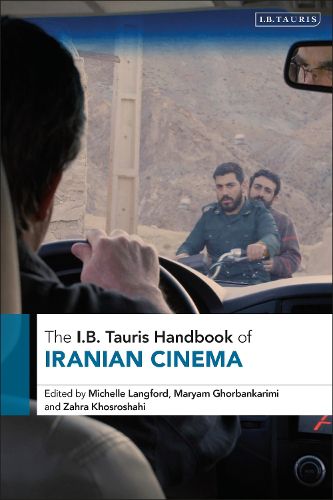Readings Newsletter
Become a Readings Member to make your shopping experience even easier.
Sign in or sign up for free!
You’re not far away from qualifying for FREE standard shipping within Australia
You’ve qualified for FREE standard shipping within Australia
The cart is loading…






This volume brings together scholarship from both established scholars and early career academics to provide fresh insights and new research on the cinema of Iran. The book is organised around eight broad themes including cinema before and after the revolution, stylistic innovation, documentary, gender, and genre. Encompassing a diverse range of methodological approaches and disciplinary frameworks including film studies, cultural studies, and political economy, each chapter is a self-contained study on a specific topic engaging with the national and transnational history of Iranian cinema which combined provide readers with original new insights into Iranian film and filmmakers, from fiction films to art house and popular cinema. The Handbook includes analysis of the works of established filmmakers such as Bahram Beyzaie, Rakhshan Banetemad, Abbas Kiarostami and Mohsen Makhmalbaf, as well as the output of emerging voices such as Ida Panahandeh and Shahram Mokri. Covering well-known topics as well as cutting edge ones such the sonic and visual manifestations of the urban environment in Iranian films, this book is a vital resource for understanding Iran and its unique cinematic culture.
$9.00 standard shipping within Australia
FREE standard shipping within Australia for orders over $100.00
Express & International shipping calculated at checkout
This volume brings together scholarship from both established scholars and early career academics to provide fresh insights and new research on the cinema of Iran. The book is organised around eight broad themes including cinema before and after the revolution, stylistic innovation, documentary, gender, and genre. Encompassing a diverse range of methodological approaches and disciplinary frameworks including film studies, cultural studies, and political economy, each chapter is a self-contained study on a specific topic engaging with the national and transnational history of Iranian cinema which combined provide readers with original new insights into Iranian film and filmmakers, from fiction films to art house and popular cinema. The Handbook includes analysis of the works of established filmmakers such as Bahram Beyzaie, Rakhshan Banetemad, Abbas Kiarostami and Mohsen Makhmalbaf, as well as the output of emerging voices such as Ida Panahandeh and Shahram Mokri. Covering well-known topics as well as cutting edge ones such the sonic and visual manifestations of the urban environment in Iranian films, this book is a vital resource for understanding Iran and its unique cinematic culture.